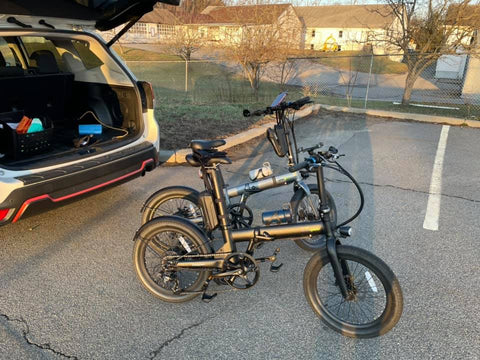How to Choose Your First Electric Bike
Cycling is the new driving. The idea of riding an e-bike instead of driving sounds great for most people. Obviously, since electric cycling doesn’t consume gas, e-bike emits a lot less carbon than a car would. And that can really make a measurable impact on the environment. Besides your e-bike can be a fitness tool if you use the motor just enough to keep going. Cycle until you’re either wiped out or you hit a steep hill, and then rev the engine for that extra oomph.
Now that we know why we should get one, it’s time to choose the right one! Here are some tips to help you make the right decision and start riding.

Electric bikes are designed for different people and different purposes. It’s up to you to decide what is most important to you, what is not important at all. The most common types of electric bikes are road e-bikes, urban commuting e-bikes, sand and snow (fat tire) e-bikes, mountain climbing e-bikes, cargo hauling e-bikes . The question you need to ask yourself before entering the store is what is your purpose of having an e-bike.
Generally speaking, e-bikes are bicycles with a battery-powered “assist” that comes when you pedal or, in some cases, use a throttle. Pushing the pedals engages a small motor, which gives you a boost, so you can zip up hills and cruise over rough terrain without breaking a sweat. Twisting a throttle does the same with no pedaling necessary.
There are two main motor types: mid-drive motors, with the motor positioned in the middle of the bike, usually between the pedals; and hub-drive motors, which are located in the center of either the front or rear wheel (usually the rear).
Lithium-ion batteries are everywhere, so it’s no surprise to find them powering e-bikes. More expensive e-bikes have higher-tech batteries that are lighter, charge quickly, and last longer. Batteries degrade over time, holding less charge as they age. The quality of the battery makes a difference, so look for a reputably named battery manufacturer such as Sony, Samsung or Panasonic, and make sure the warranty covers the battery for at least two years. Lithium-ion batteries are typically said to last 800 full charge cycles. That’s about three years of weekday commuting. They survive longer with careful use, so you should get at least 2,000 half-charge cycles. Those are pessimistic estimates though, in practice, a battery life of several years is quite easily achievable. A full charge typically takes between two and a half to six hours, depending on the manufacturer, battery capacity, and battery chemistry.
The distance an e-bike will go on one charge of the battery is called range. It’s probably the most important specification. If your commute involves a big hill, for example, you don’t want to run out of juice halfway up. Without power, an e-bike is just a heavy bike. The range depends of the battery capacity, the speed, your weight, profile of the commuting tour, the assistance level you choose and percentage of given pedaling power. If you’re only going to do ten kilometers of daily commuting, you don’t need a 70 km range. Nevertheless, you should buy a bike with a higher range than you necessarily need because the range will drop as the battery ages and loses capacity.
Buying an electric bike is a big investment, regardless of whether it is $1500 or $10000. With a warranty, you can rest assured that your investment is worth it. A two year warranty on parts, motor and battery (with no exclusions for normal use) is reasonable to expect from most electric bike manufacturers with product selling for over $2000.
Don't try just one – it's a large chunk of change you are parting with, and all bike stores know this. Good bike stores will be fine with you borrowing the bike for a trial ride.
Being environmentally sustainable is about more than just running on electricity: it’s about the way the bike was built, the quality of its construction, and the after-purchase service to keep it in great condition. You should expect that your bike should last from five to ten years at a minimum with regular service, and that your battery should last from 600 to 800 full charge cycles. Check out the reviews and talk to the dealer. When the battery needs to be replaced, your retailer should be ready to have it rebuilt or recycled, but not thrown in the trash.
So those are the factors you need to take into consideration before purchasing. Did we miss anything? Comment below! If you want to enquire about our qualisports e-bikes, contact us today!
Share